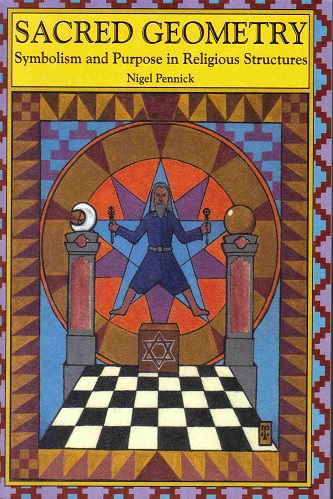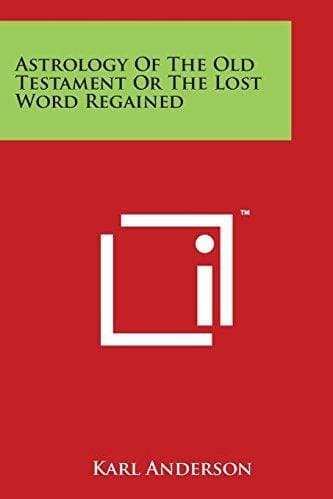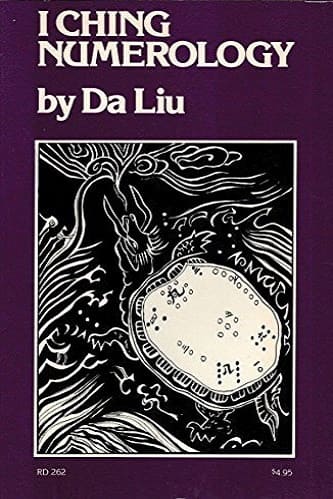Sacred Geometry: Symbolism and Purpose in Religious Structures
$25.87
| Author(s) | |
|---|---|
| Format |
|
| Pages |
158 |
| Published Date |
1980 |
Sacred Geometry Symbolism and Purpose in Religious Structures Looks at how several styles of religious architecture make use of geometry and suggests what religious symbolism various geometric shapes exhibit. The principles that underlie disciplines such as geomancy, sacred geometry, magic or electronics are fundamentally linked with the nature of the universe.
Introduction:
Geometry exists everywhere in nature: its order underlies the structure of all things from molecules to galaxies, from the smallest virus to the largest whale. Despite our separation from the natural world, we human beings are still bounded by the natural laws of the universe. The unique consciously-planned artefacts of mankind have, since the earliest times, likewise been based upon systems of geometry. These systems, although initially derived from natural forms, often exceeded them in complexity and ingenuity, and were imbued with magic powers and profound psychological meaning.
Geometry, literally ‘the measuring of the earth’, was perhaps one of the earliest manifestations of nascent civilization. The fundamental tool which underlies all that is made by the hands of people, geometry developed out of an even earlier skill — the handling of measure, which in ancient times was considered to be a branch of magic. At that early period, magic, science and religion were in fact inseparable, being part of the corpus of skills possessed by the priesthood. The earliest religions of humanity were focused upon those natural places at which the numinous quality of the earth could be readily felt: among trees, rocks, springs, in caves and high places.
The function of the priesthood that grew up around such sites of natural sanctity was at first interpretative. Priests and priestesses were the specialists who could read meaning into auguries and oracles, storms, winds, earthquakes and other manifestations of the universe’s energies. The arts of shamanism that the earliest priests practised gave way with increasing sophistication to a settled ritual priesthood that required outward symbols of the faith. No longer were unhewn boulders and isolated trees the sole requirement of a place of worship. Enclosures were laid out, demarcated as special holy places separate from the profane world. In the ritual required by this laying-out, geometry became inseparably connected with religious activity.
The harmony inherent in geometry was early recognized as the most cogent expression of a divine plan which underlies the world, a metaphysical pattern which determines the physical. This inner reality, transcendent of outer form, has remained throughout history the basis of sacred structures. Hence, it is just as valid today to construct a modern building according to the principles of sacred geometry as it was in the past in such styles as Egyptian, Classical, Romanesque, Islamic, Gothic, Renaissance or Art Nouveau. Proportion and harmony naturally follow the exercise of sacred geometry, which looks right because it is right, being linked metaphysically with the esoteric structure of matter.
Sacred geometry is inextricably linked with various mystical tenets. Perhaps the most important of these is that attributed to the alchemists’ founder Hermes Trismegistus, the Thrice Great Hermes. This maxim is the fundamental ‘As above, so below’, or ‘That which is in the lesser world (the microcosm) reflects that of the greater world or universe (the macrocosm)’. This theory of correspondences underlies all of astrology and much alchemy, geomancy and magic, where the form of the universal creation is reflected in the body and constitution of man. Man in turn is seen in the Hebraic conception of having been created in the image of God — the temple ordained by the Creator to house the spirit which raises man above the animal kingdom.
Thus, sacred geometry treats not only of the proportions of the geometrical figures obtained in the classical manner by straightedge and compasses, but of the harmonic relations of the parts of the human being with one another; the structure of plants and animals; the forms of crystals and natural objects, all of which are manifestations of the universal continuum.
Contents:
- The Principles of Sacred Geometry
- The Forms
- Ancient British Geometry
- Ancient Egyptian Sacred Geometry
- Mesopotamian and Hebrew Sacred Geometry
- Ancient Greece
- Vitruvius
- The Comacines and Medieval Sacred Geometry
- Masonic Symbolism and Documentary Evidence
- Problems, Conflicts and Divulgence of the Mysteries
- Renaissance Sacred Geometry
- Baroque Geometry
- Sacred Geometry in Exile
- Science: The Verifier of Sacred Geometry
Sacred Geometry: Symbolism and Purpose in Religious Structures By Nigel Pennick pdf
4 reviews for Sacred Geometry: Symbolism and Purpose in Religious Structures
Clear filtersOnly logged in customers who have purchased this product may leave a review.










Aubrey Hawkins (verified owner) –
Nigel Pennick is truly excellent at taking a subject that is wide open to nonsense and instead writing very sensible accounts of the development of these ideas. This book is unique! Well-written, clear, intelligent work.
Victor Hester (verified owner) –
good book
Wyatt Thompson (verified owner) –
I expected a lot more math/science, historical background and Greek with this book. I was sorely disappointed with the content and writing of this one. This is one of the few Nigel Pennick books I did not care for.
Zendaya Lewis (verified owner) –
I’ve purchased approximately 100 books from Amazon and this is definitely one of the best. The author obviously posesses the wisdom necessary to tackle this subject, and the necessary skill as an author to make a dry subject enjoyable. Many authors ramble on and take pages to make a single point, whereas this author is straight to the point and doesn’t waste a single word.
I was left with the impression that reading this small book was like reading condensed knowledge that others may take several books to explain. One strong point is that the goal or purpose of the book is a constant theme throughout. It was a joy to read and very informative – so much so that I feel compelled to write a review (my first).